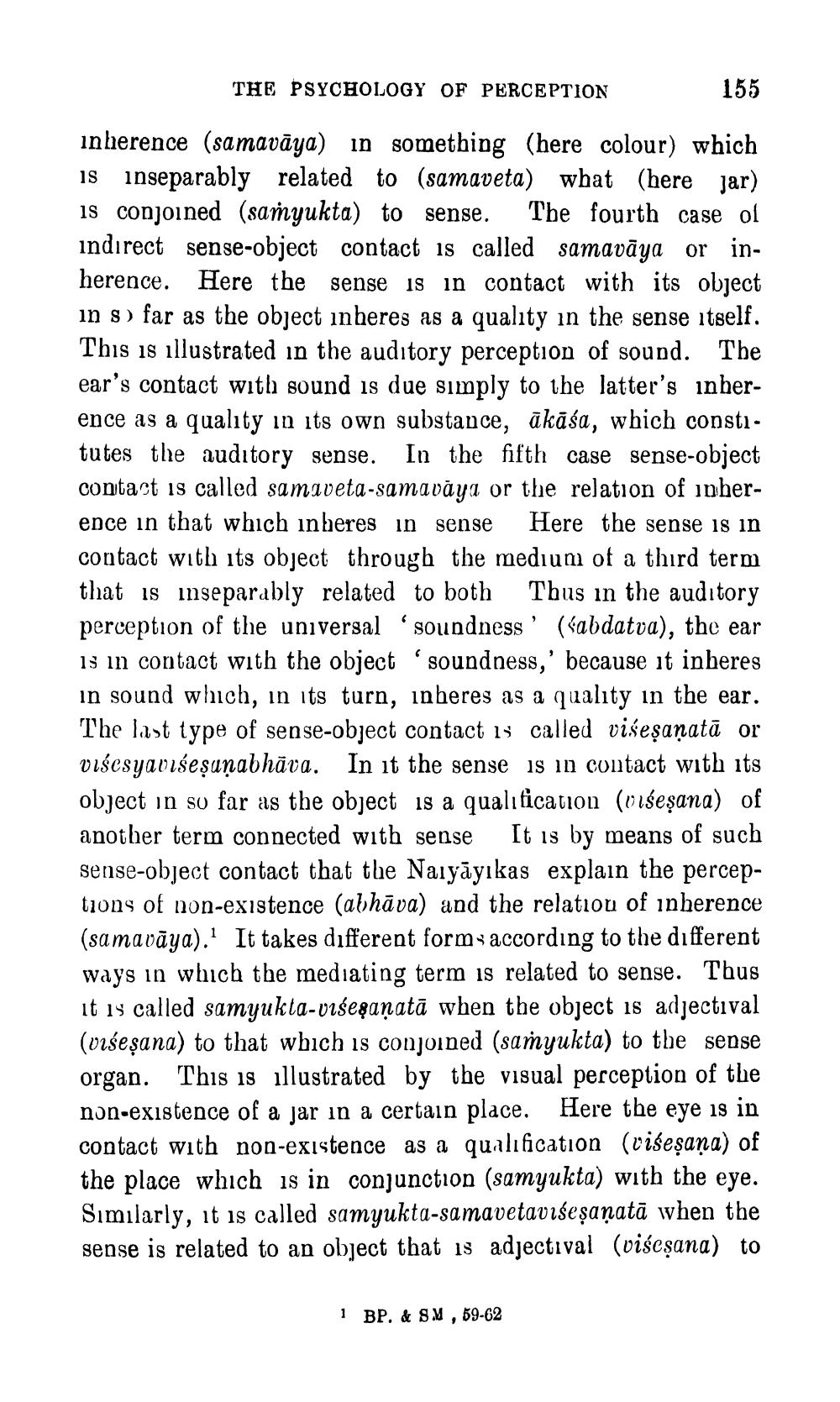________________
THE PSYCHOLOGY OF PERCEPTION
155
inherence (samavāya) in something (here colour) which is inseparably related to (samaveta) what (here jar) is conjoined (samyukta) to sense. The fourth case of indirect sense-object contact is called samavāya or inherence. Here the sense is in contact with its object in s ) far as the object inheres as a quality in the sense itself. This is illustrated in the auditory perception of sound. The ear's contact with sound is due simply to the latter's inherence as a quality in its own substance, ākāśa, which constitutes the auditory sense. In the fifth case sense-object contact is called samaveta-samavāya or the relation of inherence in that which inheres in sense Here the sense is in contact with its object through the medium of a third term that is inseparably related to both Thus in the auditory perception of the universal 'soundness' (sabdatva), the ear is in contact with the object 'soundness,' because it inberes in sound which, in its turn, inberes as a quality in the ear. The last type of sense-object contact is called višeşaņatā or višesyamiseșuņabhāva. In it the sense is in contact with its object in so far as the object is a qualification (višeşana) of another term connected with sense It is by means of such sense-object contact that the Naiyāyıkas explain the perceptions of non-existence (abhāva) and the relatiou of inherence (samavāya).' It takes different forms according to the different ways in which the mediating term is related to sense. Thus It is called samyukta-visesaņatā when the object is adjectival (višeșana) to that wbich is conjoined (samyukta) to the sense organ. This is illustrated by the visual perception of the non-existence of a jar in a certain place. Here the eye is in contact with non-existence as a qualification (višeşaņa) of the place which is in conjunction (samyukta) with the eye. Similarly, it is called samyukta-samavetaviseșaņatā when the sense is related to an object that is adjectival (višeşana) to
1 BP. & 8.1, 59-62




